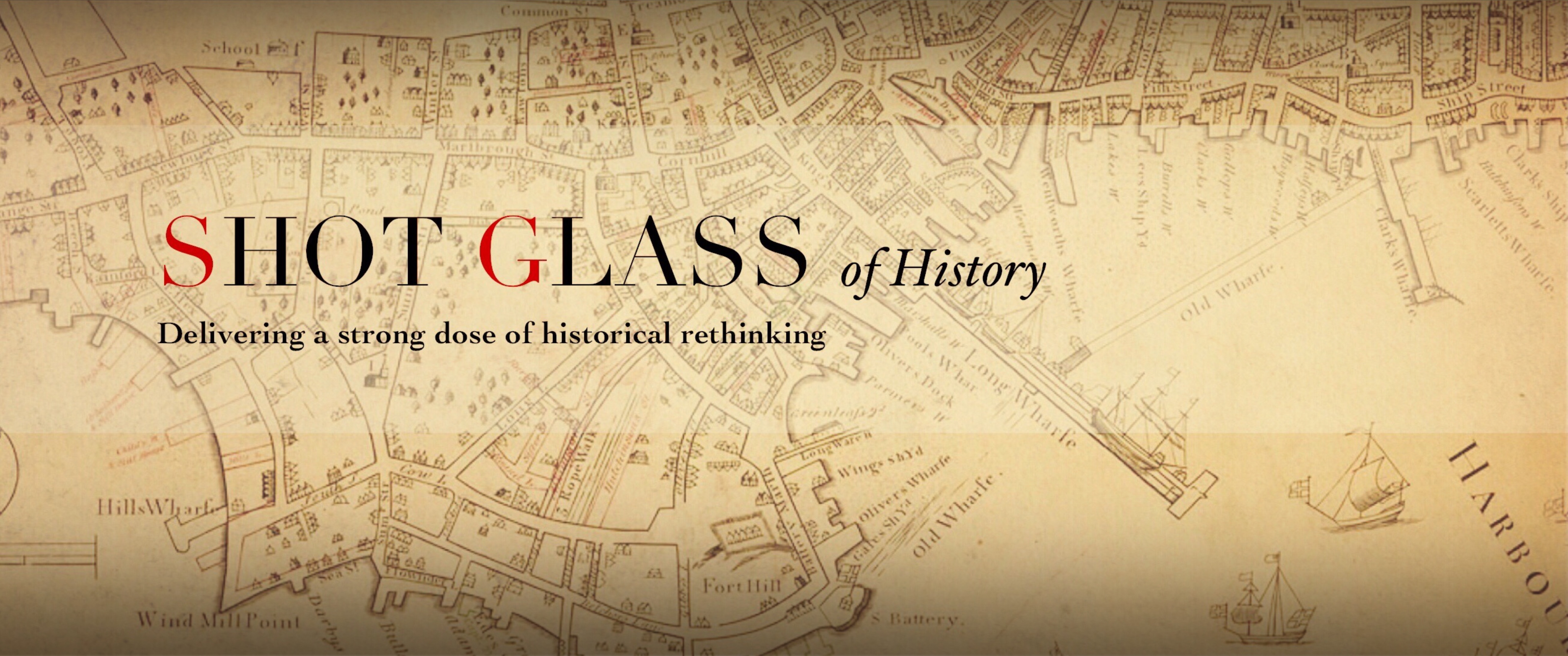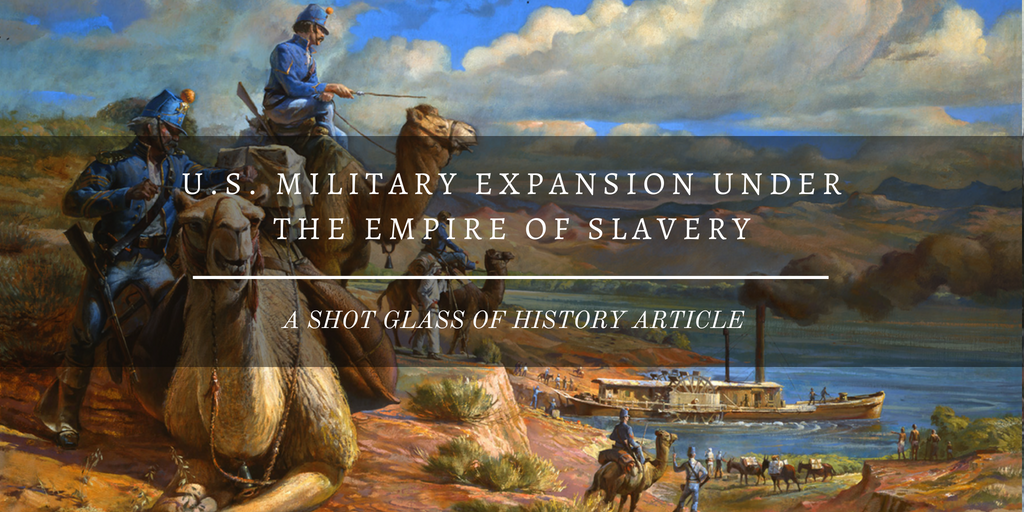This Vast Southern Empire: Slaveholders at the Helm of American Foreign Policy
BY MATTHEW KARP
HARVARD UNIVERSITY PRESS, 368 PAGES, $26.95
–
The Antebellum South has traditionally been portrayed as regressive and sectional, defensively focused on preserving slavery in the southern states in opposition to federal expansion. However, as historian Matthew Karp describes in his recent book, This Vast Southern Empire: Slaveholders at the Helm of American Foreign Policy, it was southern slaveholders that led the way in attempting to establish a strong, national U.S. military. In fact, throughout most of the Antebellum era, southerners made up the vast majority of federal positions related to military policy and foreign diplomacy. Karp records:
Between 1847 and 1861 men from the future Confederate states served as secretary of war for eleven of fourteen years and secretary of the navy for nine. In Congress the proportion of southerners leading the Military and Naval Affairs Committees was equally lopsided. During a decade in which the future Confederate states accounted for less than a third of the nation’s population, and little more than a fifth of its free population, representatives from those states occupied nearly three-quarters of the key federal positions in the formulation of military policy. (Karp, This Vast Southern Empire, 199)
Their goal was not merely to expand southern interests, but to provide what Karp describes as a national, U.S. “foreign policy of slavery.” In fact, the future of slavery and American Manifest Destiny was one and the same to them. In the eyes of southern slaveowners, slavery was the economic backbone of America, and it had to be protected from the threat of free market, wage labor of abolitionist nations like Britain. To them the only way to compete with the imperial nations of Europe was to provide a counter American empire. And this would require building a strong, national military, and an alliance with the other American slaveholding nations that shared this common economic bond with the U.S.
[S]laveholders recognized that in a midcentury world dominated by open commerce and expanding empires, they could not neglect the hard power of the central state. The U.S. government, enhanced by ambitious military reforms, would play an essential role in managing the global transformations they envisioned and in shaping the new era they welcomed into being. (p. 202)

James C. Dobbin
In the 1850s, under secretary of the navy, James C. Dobbin of North Carolina the U.S. Navy underwent a transformative increase and modernization from coastal gunboats to oceangoing steam frigates. Since the 1840s slaveholders had pushed for U.S. naval expansion. Jefferson Davis had declared in 1844 that the South had “a delicate and daily increasing interest in the navy” (p. 202). When the subject came up again in the 1850s under Dobbin, Southern newspapers were extremely blunt about the South’s interest in the matter. Without the ability to wage offensive military action on the high seas, the South was at the mercy of Great Britain and France should either nation decide to “resolve upon the chaotic creation of a negro confederation in the Antilles” (p. 206). For years, Southern slaveholders had feared that the introduction of European abolitionism among the Caribbean nations could create a domino effect that would destroy the international slave economy, and they firmly believed that the formation of a U.S. fleet was necessary in order to prevent any such European venture.
But not only would a strong navy help prevent the threat of European interventionism, it would also serve a more nationalistic purpose. “If powerful at sea, we shall keep back the tide of vandalism from our own shores—we will also reflect light to the people of all other lands” (Ibid.). The Virginian Thomas Bocock, chairman of the Committee on Naval Affairs was one of many southerners who saw the Navy as an essential component of an aggressive and expansionistic U.S. foreign policy: “It is manifest destiny which is bearing the red man of the country westward upon a receding wave into the great ocean of annihilation. It is manifest destiny which will ever make a strong, vigorous, and healthful race overrun and crush out a weak and effete one” (Ibid.). Specifically they saw Latin America as this target for a powerful U.S. Navy and Manifest Destiny.

Jefferson Davis
Meanwhile, the U.S. Army was also being expanded, and by none other than the future president of the Confederacy, Jefferson Davis. If the U.S. hoped to push its power westward over the indigenous tribes and empires, they would need to dramatically increase their manpower. Following the example of the French colonial forces in Algeria, Davis proposed establishing a network of garrisons from which they could dispatch large “marching columns” into native territory. This borrowed tactic “implicitly acknowledged the U.S. military as an occupying force in fundamentally hostile territory” (p. 214), and as one more empire to be counted alongside those in Europe. In addition to adopting French imperial tactics, Davis also used the Prussian military as a model to reorganize and centralize U.S. Army administration.
By 1857 they [Dobbin and Davis] had succeeded in overhauling the U.S. armed forces. To a steam navy of 14 small vessels, bearing just 71 guns, Dobbin provided for 11 powerful new steamships that carried a total of 308 guns and 1,000 new sailors to man them. Davis, meanwhile, oversaw an army that grew from under 11,000 to nearly 16,000 active troops, a relative increase of almost 50 percent. To be sure, the military establishment remained small compared with the powers of Europe. But the enhanced U.S. Army now boasted a troop number comparable to, if not larger than, total British army strength in the Western Hemisphere. And by the historical standards of the American republic, the increases were considerable, if not unprecedented. Altogether, the U.S. Army, Navy, and Marines gained about 6,000 new personnel during Pierce’s term in office, by far the largest peacetime expansion achieved by any administration since the War of 1812. (pp. 215-216)
In fact, some Republicans at the time angrily calculated that the U.S. government was spending more on the military than they had during the recent Mexican-American war.
While many of these Republicans also complained that U.S. military and foreign policy was being used to promote southern interests, this doesn’t adequately capture the extent that southerners believed in the nationalistic nature of their politics. Southern slaveowners didn’t distinguish between the economic future of slavery and the economic future of America as a whole. Ironically, however, the southern push for military expansion occurred simultaneously at a time when the South was politically pulling apart from the North. In just a few short years the same military that they had helped to establish would be used against them when they seceded after northern republicans took control of the federal government in the 1860 election.

In 1856 U.S. Secretary of War, Jefferson Davis, founded the Camel Corps, bringing over North African camels to be used as pack animals to support U.S. military expansion into the southwest.


Interesting that at that point in time Republicans were irritated by military expansion.